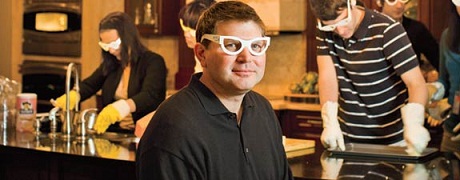 Storyville
Storyville Research Research |
 Synthesis Synthesis |
 Design Design |
 Solution Solution |
|
Personas 02
|
Storyville: Research |
01 User Research |
"Designing for boomers is critical — someone turns 50 in the U.S. every seven seconds. They won't give up style or performance, and they won't buy something made specifically for the aging because that's not how they see themselves. But if it's easier to use and it speaks to their needs, they'll love it. And if something is easier for a 65-year-old to use, it's going to be easier for a 35-year-old to use." [1]
- Marc Hottenroth, Industrial Design leader, GE Appliances & Lighting

Retirement: Finding Meaning in Travel and Volunteerism
Retirees tend to have a lot of time on their hands and sometimes struggle to engage themselves in meaningful work after their careers. Many try to find ways to contribute to their community as well as enrich themselves through travel and learning [4]. Below are some key points we found about people in this demographic (from the AARP website): [2, 3]
- Older workers are marketable. They have more skills, experience and stability than younger competitors.
- Boomers tend to be altruistic.
- Many older workers can't afford to retire.
- 60% of Baby Boomers follow podcasts + blogs + video + forums
Sharing Stories
Many people desire to contribute to the local community they have lived in and like sharing stories about their community with the younger generation [5]. Preserving stories, is also a desirable cultural goal as evidenced by projects such as StoryCorps. However there is a lack of public funding for such projects [6], which highlights an opportunity gap for a way to support co-creating and sharing this value.
[1] Schomer, Stephanie. "GE's Marc Hottenroth Is Building a Home Made for Baby Boomers." Fast Company. 12 Jan. 2011. Accessed 14 Feb. 2011.
[2] Wolf, Richard. "Some Boomers 'Retire' to Jobs That Allow Them to Help Others." USA Today. 30 Jan. 2011.
[3] Perez, Sarah. "How to Reach Baby Boomers with Social Media." ReadWriteWeb. 20 Feb. 2009. Accessed 14 Feb. 2011.
[4] http://www.retirementjoy.com
[5] Hanifan, L.J. "The Rural School Community Center." Annals of the American Academy of Political and Social Science Vol. 67, New Possibilities in Education, Sep. 1916, pp. 130-138.
[6] http://storycorps.org